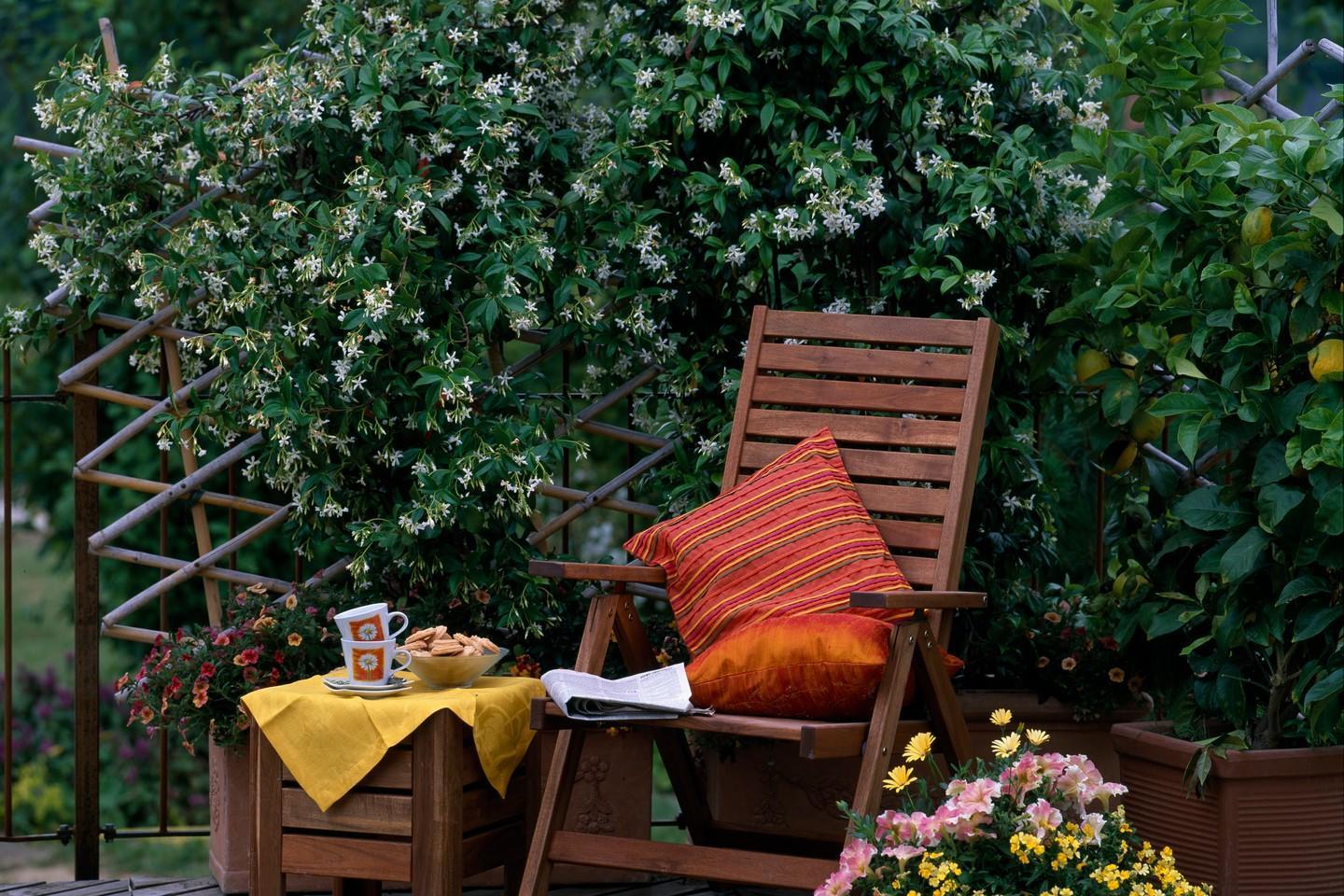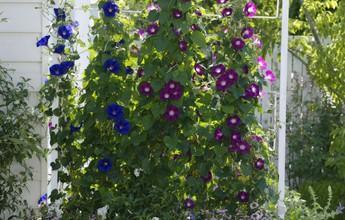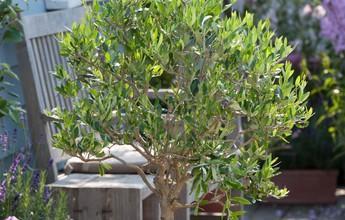
The great thing about gardens, whatever their size, large or small, balcony or courtyard, is that there is so much space: vertical space, that is. Building from the ground upwards, layering plants at different levels, employing outside walls, bringing in climbing frames, opens up whole new vistas as well as planting choices.
USE WALL POWER
The key is to place a climbing frame before you place the climber. Use a trellis panel, highlighting it with a coat of paint to prolong its life as well as make it decorative. Or, for an invisible support in the garden of your new Weston Homes house, knock or screw vine eyes into the wall at intervals and thread horizontally with galvanised wire, pulled taut (though not if you’ve chosen one of the company’s apartments, as buyers cannot affix climbing frames, trellis or vine eyes to external walls in this case). Thus, instead of a climber shooting skywards, you can encourage it to grow outwards by fanning out the branches, and securing them horizontally to the frame with twist ties. Another bonus is that those stems will break bud along their length, encouraging fresh new growth, and so fill the space faster.
SCALE THE HEIGHTS
A climbing plant such as evergreen jasmine Trachelospermum jasminoides will smother a wall and the sunnier the aspect, the more sweet-scented jasmine flowers it will produce. For drama – and easy maintenance – a viticella clematis just needs cutting back to the first set of buds come February. It won’t bloom over winter, but is worth growing for the mass of rich purple flowers from high summer right through to autumn; Polish Spirit and Etoile Violette are heavenly. You could grow a viticella over a dividing screen or side wall. Don’t discount ivy, because grown in a container, and in a limited space, you can easily control it to give you a year-round green backdrop. Nothing could be easier.
BE UPWARDLY MOBILE
If you don’t have a suitable wall, bring one in. Two-in-one planters that incorporate trough and trellis are perfect for creating instant height. A trio or more of these could be lined up to make a dividing or even a back wall for climbing plants such as the compact honeysuckle Rhubarb and Custard, or Clematis tangutica, its nodding flowers resembling lemon peel to be replaced in autumn with silken, fluffy seedheads.
Small trees in roomy planters are another upper-storey level to consider. Given a sunny aspect, a mop-headed olive tree will prove surprisingly hardy; a Japanese maple offers glorious shades in autumn and can be shunted off centre stage through winter; a corkscrew hazel, Corylus avellana Contorta, has wonderfully twisting, twirling stems that make a novel living sculpture and are a great talking point.
Another way of introducing height is to invest in two or three tall obelisks made from trellis panels, set into Versailles tubs. Painted pale grey or white, they look terrific with nothing fancier than green-and-white bird’s foot ivy swarming up their sides.


CREATE AN UNDERSTOREY
Make full use of containers for multi-storey planting, so that the olive tree might be underplanted with prostrate rosemary, providing a little corner of the Mediterranean; the Japanese maple, a blanket of soft pink heather; the corkscrew hazel, a froth of pale blue pansies around its base. And to set off green-and-white ivy, nothing could be prettier at this time of year than pure white cyclamen, to be replaced with white violas the following spring.
CARRY THE COLOUR THROUGH
Seasonal bedding at low level creates jewel-like carpets of colour, so place planters where they are most visible, such as along the front of a balcony. Mid-level, a tablescape comprising a wide bowl of mixed bedding is an effective way of brightening the landscape and giving you a cheerful view from the other side of the window through the grey days of winter. Right now at garden centre or plant nursery there is a huge choice to carry the colour through to spring: flowering skimmias, pansies, violas, cyclamen, heathers, crimson-berried pernettya and orange-fruited solanum, evergreen grasses and ornamental cabbages, trailing ivies and scented thymes. The ruffled leaves of heucheras, in all shades of an autumn bonfire, make a great choice.
This is the moment, too – well, you have a month or two – to plant bulbs. And you can even layer these, in a “lasagne” planting: tulips at the bottom of the pot, daffs in the middle and grape hyacinth, dwarf iris or crocus at the top, leaving 5cms of compost between each layer.
Ground-level gardens are all very well – but multi-layered gardens? They’re a whole other level.
Credit GAP PHOTOS/FRIEDRICH STRAUSS